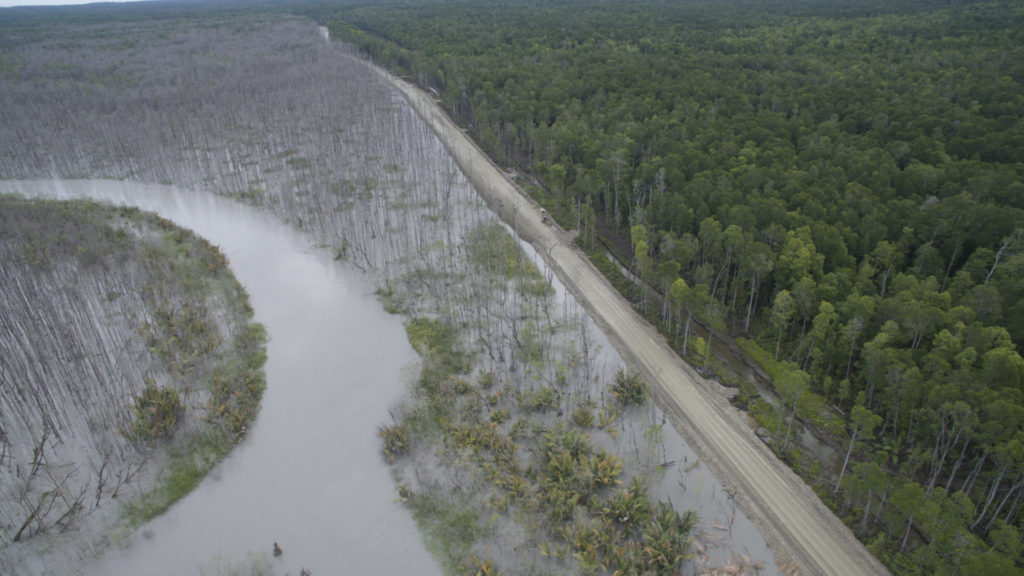Grasberg Mine: Hazardous and Inhumane
Freeport McMoRan’s Grasberg mine, located in the province of Papua in Indonesia, is one of the world’s largest open-pit copper and gold mines. Mining operations and tailings, which are laden with hazardous waste, repeatedly displace local communities, damage food supplies, and destroy aquatic life closely tied to traditional livelihoods.
For 30 years, the Arizona-based mining company has dumped millions of tonnes of mine waste directly into the Ajkwa river system where it flows into an area of lowland forest. A series of dikes and levees fail to contain the waste, which contaminates the surrounding land, an area of lowland and mangrove forest, before spilling into the Arafura Sea.

Currently, 20% of the waste is flowing into the ocean, according to activists with Indonesia-based Action for Ecology and People’s Emancipation (AEER). The heavy-metal filled tailings are expected to remain in the sediment of the Ajkwa estuary for centuries after mining is completed. And while a deal struck between Freeport and the Indonesia state owned mining company, Inalum, means Freeport no longer holds a majority stake, its responsibility for this massive and ongoing environmental disaster remains.
The mine is adjacent to Lorentz National Park, one of the largest protected areas in Southeast Asia and home to extensive biodiversity and varying ecosystems from alpine to tropical marine environments and wetlands. A study published in Nature.com in 2016 found that 138 km2 of forest has been smothered and destroyed by tailings since 1987, an area over 42 times larger than the mine itself.
The impacts from the Grasberg mine are not limited to the environment. Freeport Indonesia has a track record of labor violations and human rights abuses dating back to the 1970s; violating the indigenous Kamoro and Amungme peoples’ land rights and arbitrarily arresting those who spoke out against the mine.
“Even the smallest boats are unable to pass through coastal areas that are now filled with sedimentation from mine tailings. People are forced to bath and fish in tailings laden rivers. An end to mining activity must be on the table in order to protect the beauty and biodiversity of this place, and the communities who live there.”
Pius Ginting, Coordinator of AEER
What Are Tailings?
Tailings are the sludge left once the mineral is extracted from the ore. They contain crushed rock, processing chemicals and naturally occurring elements that become toxic when exposed to air or water. This toxic cocktail settles on and smothers the seafloor, killing everything that lives there. Tailings can also spread, contaminating other areas and destroying coral reefs and other habitat. Mining companies can avoid this dangerous waste disposal option in favor of safer, less destructive methods on land. However, it is important that land-based waste storage facilities have strong safety standards and appropriate oversight.
Banner photo credit: AEER

